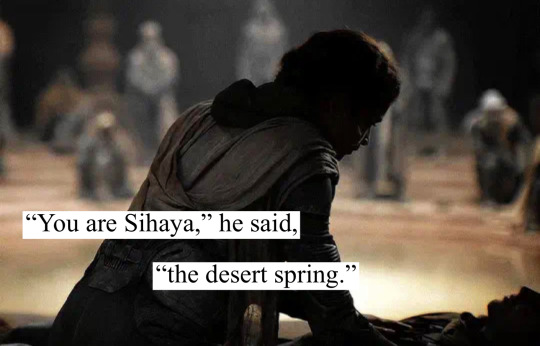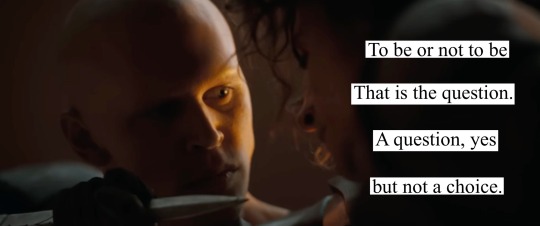#andrew dunes
Explore tagged Tumblr posts
Note
I found the homosexual 🫵
(Happy pride, uh Gayest ocs?)
Hello hello, happy pride too for you dear anon and everyone else who's reading this, I love you all!
That's a hard question because what is the gayest thing someone can do? Kiss with the homies? Hold hands? Or be in a poly romantic relationship with other men/women? If it's yes for all the above must tell you that I have many poly relationships between my OCs, but I would like to bring up these two.
Dekan, who's in a relationship with Andrew, Terong and Ryûsei (The last two belong to a friend), and Conguran, who's in a relationship with three yautjas, Dkan'Stbouar, Vanka'aur and Yah'taod
They both are completly shameless about this and they love them a lot

Honorable mentions to: - Kira, Oftha and Iney - Keops, Hotaru and Niberos - Ascaroth, Abducius, Antrax and Kurei - Aglaya and Nox'krovar
#art#digital art#sketch#ask#kofi.art#dekan#andrew dunes#ryûsei agapi#terong#conguran dimaranti#dkan'stbouar#vanka'aur#yah'taod
13 notes
·
View notes
Text




The Graham Norton Show (December 2024)
#userbecca#byaurore#userzil#userzo#userrlaura#userkam#alivedean#usereena#userelio#tuserbailey#userashe#usersavana#userallisyn#userveronika#userdavid#userzaynab#userines#useriselin#tusercarol#tuserhan#florence pugh#andrew garfield#agarfieldedit#tchalamaedit#tuserpris#tuserrachel#nessa007#dune#little women#timothee chalamet
1K notes
·
View notes
Text

West Sands, St Andrews, Fife
#photographers on tumblr#original photographers#luxlit#imiging#black and white#black and white photography#original photography#landscape photography#St Andrews#Fife#sand dunes#beach#sand
275 notes
·
View notes
Text

Bene Gesserit
https://ko-fi.com/owllog
#bene gesserit#andrew smart#dark#dark art#painting#horror#horror art#dark fantasy#death anxiety#occult#creature design#dune part two#dune movie#dune#dune art#dune awakening#dune aesthetic#paul atreides#witch#witches#scifi#book#books
67 notes
·
View notes
Text
Andrew Dunes ref update
One of my favorite softies got a buff and now he's part of one of my original species who still lacks of a name.

Andrew is a very chill feline-dragon like creature. He likes to keep himself clean and brushed and, compared to others, he's very friendly with everyone as long as they respect his limits.
He loves shiny things, specially chains and rings. Lacks of fire breath just like most of his species. Surprisingly he's somewhat skinny muscular, keeping the typical trait of strong, big arms, wide chest and short powerful legs but his movements being more graceful and fluid.
#digital art#artist on tumblr#furry#furry art#anthro#anthro art#feline#original species#oc#kofi.art#andrew dunes
5 notes
·
View notes
Text



#timothee chalamet#dune part two#dune movie#facebook#mark zuckerberg#eduardo saverin#the social network#andrew garfield#jesse eisenberg#zendaya#call me by your name#elio perlman#bob dylan#a complete unknown#premiere
35 notes
·
View notes
Text










“Nice and neat, tragedy. Restful, too. In a drama, with its traitors, its desperate villains, its innocent victims, avengers, devoted followers and glimmers of hope, death becomes something terrible, a kind of accident. You might have arrived in time with the police. But tragedy's so peaceful! For one thing, everybody's on a par. All innocent! It doesn't matter if one person kills and the other is killed - it's just a matter of casting. And above all, tragedy's restful, because you know there's no lousy hope left. You know you're caught, caught at last like a rat in a trap, with all heaven against you. And the only thing left to do is shout - not moan, or complain, but yell out at the top of your voice whatever it was you had to say. What you've never said before. What perhaps you didn't even know till now… And to no purpose - just so as to tell it to yourself... to learn it, yourself. In drama you struggle, because you hope you're going to survive. It's utilitarian - sordid. But tragedy is gratuitous. Pointless, irremediable. Fit for a king!” —Jean Anouilh, Antigone
#dune 2021#dune 2024#dune part two#frank herbert#ocean vuong#on earth we're briefly gorgeous#ethel cain#andrew kane#catherynne m. valente#sharon olds#jean anouilh#antigone#web weaving#timothee chalamet#zendaya#austin butler#rebecca ferguson#florence pugh#paul atreides#chani kynes#feyd rautha harkonnen#princess irulan#lady jessica#mine#dune
122 notes
·
View notes
Text

#thursday#ls dunes#tucker rule#tucker everyday#daily tucker rule#justin borucki#andrew everding#geoff rickly#tim payne#steve pedulla#day 577
28 notes
·
View notes
Text

Dunes on the West Sands, St Andrews, Fife
#photographers on tumblr#original photographers#luxlit#imiging#black and white#black and white photography#original photography#landscape photography#St. Andrews#Fife#sand dunes#ello photographers on tumblr#elloon
292 notes
·
View notes
Text


Martin Scorcese is about to make another movie about Christ and hasnt cast Jesus yet. All I can say is, Marty, do it for the memes!
#timothee chalamet#dune part two#martin scorcese#dune#paul atreides#christ#jesus christ#timothée chalamet#btw#The Last Temptation of Christ is one of my top ten films so I do love Marty#Andrew Garfield#is clearly the right choice#clearly anything remotely spiritual should always be played by Andrew Garfield#have you heard the man talk? he feeeeels life on another level
71 notes
·
View notes
Text

Dune AU
Quick sketch with Dune AU
I can to see Neil as Paul and Jesica as Mary
Andrew obviously is Chani
I would like to read long fic with this universe
Give me your headcanons for this AU
#all for the game#neil josten#andrew minyard#digital art#andreil#kevin day#exy is sexy#fun art#aftg#art#alternate universe#dune#dune part 2#nathaniel wesninski
77 notes
·
View notes
Text




Florence Pugh and Andrew Garfield photographed by Marc Piasecki during "Valentino Show", 2023
#florence pugh#little women#black widow#dune part 2#andrew garfield#peter parker#spiderman#the amazing spider man
59 notes
·
View notes
Text
Dust Volume 10, Number 1

Finnoguns Wake
Wow, it’s been 10 years since we started Dust, our monthly collection of short reviews. During that time, we’ve covered hundreds of records that might have otherwise slipped through the cracks — from obscure CD-Rs handed off at live shows, to long-lost reissues dug out of attics and basements, to the maniacally focused output of the micro-labels we love to even, occasionally, semi-major releases. Our conclusion: It may be hard times for music criticism, especially the paid variety, but it’s an excellent era for listening to music. Here’s what we’ve uncovered to kick off the next decade. Contributors include Bill Meyer, Jennifer Kelly, Ian Mathers, Andrew Forell, Justin Cober-Lake, Bryon Hayes, Patrick Masterson, Alex Johnson and Christian Carey.
Dave Bayles Trio — Live At The Uptowner (Calligram)
Good things are happening around Milwaukee. That’s where Dave Bayles practices his crafts as a jazz drummer and educator (actually, he teaches in Kenosha). This recording documents his foray into band leadership, which was hosted by the Uptowner, a neighborhood tap that’s been serving drinks since the 1880s. The recorded evidence suggests that despite it being the kind of place where you can holler at the Packers on a screen, when the music’s playing, people listen. Bayle, trumpeter Russ Johnson and bassist Clay Schaub justify their attention throughout this collection of mostly original, bop-aligned themes, which they execute with a little early-Ornette flexibility and healthy servings of direct, swinging lyricism. Johnson in particular does yeoman’s work, drawing out nuanced, patient solos that are likely to induce you to forget to open your mouth, just like the audience on this entirely ingratiating live recording.
Bill Meyer
Cy Dune — Against Face (Lightning Studios)
Very late on Seth Olinsky (from Akron/Family)’s dance/noise/punk experiment, but holy wow, what a belching, squelching, head-whipping sharp turn it is. If Akron/Family took gentle folk songs right off the rails, Cy Dune starts in chaos and ends in angsty cyber-age freefall. The trip typically takes one or two minutes, though the unironically named “Don’t Waste My Time” extends for three. Within that time frame, bass note bobble, snares snap, guitars twist and Olinsky shouts in terse syncopation, breaking occasionally for non-Jude-like “na-na-na-nahs.” “Against Face” wallops hard and fast, pounding toms tethering wild squalls of guitar. “No fun, no fun, no fun,” howls Olinsky periodically, but it definitely is. Fun.
Jennifer Kelly
Dual Monitor — HARD19 (Hardline Sounds)
Say what you might about Rinse FM, the station’s leadership (read: they of the coffers) continues to do a service to the UK’s ecosystem of independent radio by way of keeping afloat other institutions. One such example was its buyout and relaunch of the old pirate station Kool FM; another was its unshuttering of beloved Bristol station SWU.FM last April. Part of the latter’s reinvigorated lineup is the duo of Fliss Mayo and Zebb Dempster, aka Dual Monitor, and their latest release caught my ear for its attention both to percussion amid propulsion and to its high-grade bass weight. “Level Up” might be the winner for me, but the pitch-black plunge of “Left/Right” and “Quattros Oxide” are grooves to behold, too. The airy D&B twist of “Switch It” is also unmissable, a lovely bit of work to close out the four-tracker. Good for a run of 200 from a label worth watching, it looks like you’re still not too late if you do a little running of your own to go grab it.
Patrick Masterson
Eluvium — (Whirring Marvels In) Consensus Reality (Temporary Residence Limited)
Matthew Cooper has made and released plenty of music since 2016’s False Readings On (much of it under the Eluvium name) but in some ways the compact, masterful (Whirring Marvels In) Consensus Reality feels like the first capital A Eluvium Album since that one. As with 2007’s Copia, it leans into the orchestral side of Cooper’s work (this time remotely collaborating with various musicians over the last couple of years), resulting in everything from the phantasmagorical choral/vocal work on “Void Manifest” and the dense arpeggios of “Vibration Consensus Reality (for Spectral Multiband Resonator)” to the solo piano miniature of “Clockwork Fables” and the whirling swells of the closing “Endless Flower.” At this point Cooper’s work is often too varied and colorful to be described as drone, and too active and involving to really be ambient; it’s just Eluvium music, and it’s wonderful to have more of it.
Ian Mathers
Finnoguns Wake —Stay Young EP (What’s Your Rupture)
Stay Young is a debut four-track EP from Australian songwriters Shogun and his mate Finn Berzin who rejoice in the name Finnoguns Wake. You’ll find no knotty linguistic experiments but for lovers of energetically melodic indie guitar bands, there are joys to be had. The pair, who share vocals, guitar and lyrics, meet somewhere between the concise attack of Shogun’s former band Royal Headache and the anthemic end of Britpop. The first three songs zip by with guitars abuzz, the rhythm section driving hard and the voices high in the mix. “Blue Sky” manages to feel satisfyingly loose atop its rigid drumbeat. “So Nice” reconfigures the riff of Husker Dü’s “Terms of Psychic Warfare” to good effect, with Berzin sounding tonally like young Dylan. “Lovers All” moves along like a rougher version of The Buzzcocks. The one misstep “Strawberry Avalanche” aims for Britpop grandeur with the misguided self-belief of late Oasis. Shogun takes his “melting ice cream” metaphors as seriously as Liam treats even his most absurd attempts to top big brother. Thing is you can picture the song working for an audience, so hats off. Stay Young is a promising introduction from a band that feels it like has more and better coming.
Andrew Forell
Lamin Fofana — Lamin Fofana and the Doudou Ndiaye Rose Family (Honest Jon’s)
New York-based producer, DJ and visual artist Lamin Fofana had a big 2023, with two releases on the famed Honest Jon’s imprint and a third for the illustrious Trilogy Tapes in addition to a Resident Advisor mix. That second Honest Jon’s album came in the form of this collaboration in early December with the Doudou Ndiaye Rose Family, an mbalax group of some notoriety in Senegal and descendents of the Dakar drummer, composer and band leader best known as master of the sabar drum family. It fits, though the exact nature of the collaboration is unclear — this is very much a percussion workout of the highest order with only a deft tinge of Fofana’s electronics providing light, cosmic buoyancy to the music, a quartet of meditations ranging between four and 12 minutes long. The most frenetic of them, at least for a spell, is “Bench Mi Mode III: Spectrum,” but even that one has its share of field recordings to lend a more immersive, consuming quality to the listen than pure rhythmic impulse. If you’re unfamiliar with any of the parties involved, you’ll thank yourself in short order for giving this a go.
Patrick Masterson
Fortunati Durutti Marinetti — Eight Waves In Search Of An Ocean (Quindi (ITA) / Soft Abuse (USA))
Dan Colussi’s latest release under the Fortunato Durutti Marinetti moniker, Eight Waves In Search Of An Ocean, is eminently listenable, engaging and, if paid proper attention, engrossing—although not always comfortably. His vocals never stray far from sprechgesang and the instrumentation tends towards warped mid-tempo. There are bright washes of keys; flute and string inflections; careful, elastic bass lines with steady, shoulder-danceable drum patterns. It’s easy to be lulled by the rosy, if somewhat baroque settings, until an ascendant burst of synthesizer or dramatic pause intrudes to break the spell. You may find yourself unsure, rewinding to find out what you might’ve just missed. In this way, the experience of the album can feel akin to a single, continuous performance with brief variations, rather than a straightforward collection of songs.
One such variation, adding perhaps the most friction to Eight Waves… is “Smash Your Head Against the Wall,” which, while not concussive, does make your ears perk up at its clawing guitar chords and the stark imagery that Colussi nearly spits out: “it’s a nest of vipers pissing on each other…and anyone else who’s around/would love to fuck you over if they can/and this community’s request/for the presumed benefit of all/is smash your head against the wall…a delta of corrosion/disorder/and decomposition.” I quote at some length, but there’s plenty more. Though a sonic departure from its surroundings — think Bill Callahan’s “Diamond Dancer” dropped into Destroyer’s Kaputt — “Smash Your Head…” is emblematic of a record that rewards the delayering effect of multiple listens.
Alex Johnson
Ghost Marrow — earth + death (The Garrote)
youtube
There is a patience to the songs on Aurielle Zeitler’s third record as Ghost Marrow, but it’s the patience of a predator stalking its prey. All seven songs here started as improvisations on the Juno-60 synthesizer, but by the time they’ve been arranged into these shapes (almost entirely by Zeitler, who adds effects and guitar as well as her voice) they feel focused and intent on the listener. The Bladerunner-esque sweep of “mother of the end” and the increasingly un-gentle blasts of static breaking into the title track both land somewhere between unsettling menace and a kind of holy severity. By the time the closing, ten-minute “microcosm” erupts into clouds of guitar and distant screaming, suddenly sounding a lot more like Sunn O)))’s Black One than the rest of the LP might make you expect, it’s clear that Ghost Marrow is intent on honoring both sides of her title.
Ian Mathers
Brian Harnetty — The Workbench (Winesap)
Composer Brian Harnetty has created memorable work by digging into cultural archives. Shawnee, Ohio (2019) uncovered layers of memory from Appalachia, while last year's Words and Silences drew on recordings of Thomas Merton for sustained contemplation. For his brief EP The Workbench, he takes a different approach, mining deeply personal moments for a individual revelation. He begins with items that his father had repaired — a watch, a radio — and adds in voicemail messages, all in conversation with an evocative quartet. Eventually he ends the piece with his father's breathing as he sleeps in hospice, a quiet outro that finds mournful but understated peace.
The 11-minute track moves so smoothly that singling out key moments almost misses the point; it's a single movement to honor a relationship while reflecting on the brevity of time and the artifacts that persist amid mortality. When a repaired music box overtakes the musicians for the final lift, it feels natural, because of course the reparations done in life will outshine our ability to articulate their meaning. Harnetty's compositions before that never falter. His use of bass clarinet (here played by Ford Fourqurean) provides the essential gravity. Violin and cello weave through the piece with his own piano lightening the composition as needed. A reworked instrumental track allows for a wordless exploration of the same topics. An accompanying video covers the workbench itself, the artifacts presented in themselves, a tangible and visual part of the legacy. It's a short statement from Harnetty but one that lasts.
Justin Cober-Lake
Nailah Hunter — Lovegaze (Fat Possum)
Nailah Hunter plays lots of instruments on this lush and twilit debut full-length, but two define its sound. Her voice, to start, is cool and effortless and strong, prone to flowery embellishments and capable of soaring crescendos without strain. She might remind you of Sade, in the poised, unruffled quiet bits, but she can belt, too, filling cavernous sonic spaces with bright untethered flourishes. The other instrument is the harp, more common certainly in classical music but not as unusual as it once was in rock and soul. But unlike Joanna Newsom who laces her tunes with folk-echoing arpeggios or Mary Lattimore who finds a celestial drone, Hunter employs the harp to scatter pizzicato shards of crystal in velvety nocturnal textures. The harp litters her moody atmospheres with star light, cold, glimmering pinpoints of sound. It contrasts in a striking way with the warmth of her voice and the pulsing, irregular syncopations of dance-like drums. These are oddly shaped elements that ought not to fit as snugly or as wondrously as they do, but they do.
Jennifer Kelly
Ernesto Diaz Infante — Bats In The Lavender Sky (Ramble)
Bay Area guitarist Ernesto Diaz Infante has always been a restless sort. Nonetheless, this album feels like a bit of a curve ball, albeit a welcome one. The improviser ensconced himself in a San Francisco recording facility named Next Door To The Jefferson Airplane Studios, but did not take the trip you might expect given a choice like that. Instead of a west coast psychedelic vibe, he has gone natural, nocturnal and New Zealand-ish. Put another way, this album mines territory similar to Roy Montgomery’s mid- to late-1990s work, with a little bit of user-friendly Mego thrown in. Repetition leads to contemplation; this music won’t move you at bat velocity, but if you happen to be floating on a slow-moving air mattress while they fly overhead, it’d make just the right soundtrack.
Bill Meyer
Joy Orbison — “Flight FM” (XL)
flight fm by TOSS PORTAL
Getting married and having a kid really seems to have opened Peter O’Grady up over the past few years. After starting his own label in 2017, he came out with an album (2021’s Still Slipping, Vol. 1), has dropped a handful of singles exploring various strains of UK dance music, and even mined the archive of his glory days for a comp of loosies long thought lost or forgotten (last year’s Archive 09-10). Far from the reserved, elusive producer he broke so big with “Hyph Mngo” as, Joy O has instead blossomed into an approachable, seemingly well-adjusted guy who just wants you to enjoy music the way he does — and what better way to do that than with this heavyweight cruiser that rolls as deep as his best material from the SunkLo days. Concocted in a car on the way to a festival, it took some badgering from Four Tet (who has some unreleased work of his own to wrap up, while we’re on the subject) for him to finish it… but thank goodness he did. The best part about this is that we skipped the Aliasizm radio rip and the endless speculation on what it was called and got straight to the release. A simple, speaker-wrecking ode to the pirate station from which it takes its name, you couldn’t start 2024 (or 2012) any better. Variation on an oft-repeated refrain lately: It’s a shame Fact isn’t around to report on it.
Patrick Masterson
Matt Krefting — Finer Points (Open Mouth)
Finer Points by Matt Krefting
Students of the northeastern U.S. freak scene know Matt Krefting for his endeavors both written and aural. His critical ear has spilled ink across the pages of The Wire magazine and Byron Coley’s Bull Tongue Review, and his sonic exploits harken back to the turn of the millennium with the studied quietude of Son of Earth. These days, Krefting makes surprisingly musical constructions using cassette decks and other tape-adjacent curios, coaxing murky melodies from spools of ferric material. Finer Points comprises layers of dusky fuzz, sandblasted environments and warmly lit instrumental passages. A lonely organ features prominently across many tracks, its doleful moan warbling slightly as Krefting’s malfunctioning tape deck motors strain to maintain a constant speed. Standing out from the nocturnal scenery is “A Double Request,” in which multiple plucked string instruments coalesce into a swampy dirge. There’s a sense of evolution at play as the parts cycle through, forming melodies that shift and tumble before falling apart entirely. This is a common theme throughout Finer Points: Krefting subtly and gradually alters the scenery. The slow unfolding creates an intoxicating glow that permeates the entire experience.
Bryon Hayes
Thomas K. J. Mejer / Uneven Same — Saxophone Quartets 1 2 5 6 7 (Wide Ear)
Uneven Same – Saxophone Quartets by Thomas K.J. Mejer
If you’ve heard of Thomas Mejer, it’s most likely because he is a rare specialist in the contrabass saxophone. In that capacity, he’s contributed tonal heft and textural complexity to the music of Phill Niblock and Keefe Jackson. But for this album, which was mostly performed by the all-female saxophone quartet, Uneven Same, he applies a nuanced comprehension of the potentialities of other saxes founded upon the advances made by improvisers to composed music that operates that is carefully textured and glides more than it grooves. Manuela Villiger, Eva-Marta Karbacher, Vera Wahl and Silke Strahl realize his long, layered lines and carefully buffed sonorities with exquisite poise. Mejer also uses overdubbing to realize four more pieces, all part of a series entitled “Resonating Voids,” on his own. By turns rough, thick, and aquatic, its elemental earthiness balances Uneven Same’s more airborne performances.
Bill Meyer
Melted Men — Jaw Guzzi (Feeding Tube)

Melted Men are an enigma that no amount of online sleuthing can crack. The only information about them online is their Discogs page and a live show review from 1997. In that bizarre performance, Melted Men was a duo from Athens, Georgia. Apparently now, 25 years later, they’ve swollen their ranks, even roping in members from as far afield as continental Europe. With Jaw Guzzi, the anonymous outfit offers up a pair of side-long audio head trips. Warped, heat haze-distorted cassette detritus sidles up to blown out exotica and disjointed Martian funk beats. There’s a hefty dose of collage on display, with mutant vignettes that serve as rickety bridges between more tuneful passages. It’s these doses of song form that will extract bobbing heads and wobbly bottoms from the most adventurous listeners. Melted Men imagine a world where the jump cut jumble of Seymour Glass intersects the ethno-punk chaos of Sun City Girls and the junk shop proto-industrial bleat of early Wolf Eyes. It’s a world that this writer wouldn’t mind visiting frequently.
(Note: Melted Men are such a mysterious bunch that they’ve asked Feeding Tube not to post any audio on Bandcamp or elsewhere on the internet.)
Bryon Hayes
Nehan — An Evening with Nehan (Drag City)
youtube
Nehan is all-star Japanese noise/drone/experimental ensemble led by Masaki Batoh and drawing members from Ghost, Acid Mothers Temple and the Silence. The disc in question presents two side-long improvisations which use as a starting point the 9hz brain wave emitted from a test subject. You can get a sense in the video above of how the experiment worked, as a dancer’s synaptic impulses feed into an elaborate synthesizer set up, turning whatever was in her head into long, pulsing drones. It’s a bit austere in its pure form, but the record elaborates, adding percussion, especially gongs and bells, and a wizened-kazoo-like wind instrument, something that might be a bagpipe and other sounds. It’s not entirely clear how much of what you hear comes from the brain waves and how much comes from the free interplay of the musicians, but maybe it doesn’t matter. The result is slow-moving and mysterious, with dramatic surges of drums and wandering threads of blown sound. The human brain is a notoriously mysterious organ but who’d have thought it could general all this instrumental turmoil? If you’d told me this music was sourced from sun storms or tidal currents or tectonic shifts, I’d have believed that, too.
Jennifer Kelly
Colin Newman and Malka Spiegal—Bastard (Swim ~)
youtube
Colin Newman’s Bastard created quite a stir in 1997 when first released. This nine-track, all-instrumental album, leaned heavily on a still mostly underground drum ‘n bass aesthetic and was a far cry from Wire’s terse, melodic outbursts. It also was Newman’s first project after Wire went on hiatus, billed as a solo effort, but actually a close collaboration with his partner Malka Spiegel. This expanded reissue gives Spiegel due credit and fills out the context with 12 additional contemporaneous tracks.
The original album still sounds fairly austere, with clean, clipped drum cadences, locked-tight guitar loops and abstract surges of synthesized sound. The amusingly named “Slowfast (falling down the stairs with a drumkit)” allows the use of distorted guitar, but only in quick, percussive blots. The guitar sound becomes an element of percussion, but not the important one—an antic skitter of drum machine dominates the cut. “Spiked” strips a funk riff down to cubist blocks, a bass sliding woozily between sharp-cut breakbeat drums. None of this is so surprising now, in the wake of techno, house and all its variants, but people weren’t expecting it, least of all from a post-punk progenitor, in 1997. The reissue adds a bunch of other tracks, many of which hew much closer to how you probably think of Wire. “Automation” adds a sinuous, down-in-the-mix vocal to its pop-locked rhythms. “Voice” bristles with guitar dissonance and bobs with dubby bass. “Tsunami” floats euphorically on sawed-down guitar feedback, a good bit like My Bloody Valentine but dancier. And “Cut the Slack” sounds like a Wire song, deadpan chants running into shouted aggressions and layers of guitar shimmering around undeniable hooks. The extra tracks make Bastard sound less like a 100% departure and more like a gradual evolution—and they are very much worth hearing all on their own.
Jennifer Kelly
Ethan Philion Quartet — Gnosis (Sunnyside)
Gnosis by Ethan Philion Quartet
Here’s a welcome surprise. As a rule, bebop-rooted jazz is not the place to look for excitement in 2023, but the rules change when Ethan Philion is on stage. On this record, his second as a leader, the Chicago-based bassist helms a quartet that combines high energy with rhythmic grace and a thorough commitment to the mechanics of the music being played. The latter point might not sound so thrilling, but it is key, since it results in performances that can be appreciated for their cohesion as well as their outward-bound vibe. Philion’s debut was a tribute to Charles Mingus that felt a little too polished; this time, the soloing by all parties (alto saxophonist Greg Ward, trumpeter Russ Johnson, drummer Dana Hall) evince both vigor and rigor.
Bill Meyer
Rick Reed — The Symmetry Of Telemetry (Elevator Bath / Sedimental)
The Symmetry of Telemetry by Rick Reed
The Symmetry Of Telemetry is Rick Reed’s pandemic album. Methodologically, it’s hard to say how much that matters, since the Austin-based electronic musician’s practice already involved patiently collecting and sifting through shortwave broadcasts and then combining them with performed electronics. But the slow-motion uneasiness of “Dysania,” the alternately abraded and bulked-up bumps that introduce “Leave A Light On For Tony,” and the disconsolate, fizzling tones that occupy most of “Space Age Radio Love Song” certainly feel like that time felt. But there’s more to this music than downer vibes. Reed knows how to layer and arrange sounds so that an apparently static passage yields event upon event anytime you decide to listen into his compacted constructions. He also knows how to make waiting pay off, and while it would be spoiling things to tell you what he does, suffice to say that if you listen, you’ll know it when it happens.
Bill Meyer
Jason Roebke Quartet — Four Spheres (Corbett Vs Dempsey)
Four Spheres by Jason Roebke
When bandleaders like Mike Reed, Jorrit Dijkstra and Jason Adasiewicz have needed a bassist who could toggle easily between swing and abstraction, they’ve called Jason Roebke. Such calls, along with everything else a person has to do to maintain a life, mean that years might pass between Roebke’s turns as a leader. But when he does, you can count on them to be deeply considered and not quite like anything else going around. This quartet applies his trademarked fluidity to investigations of the tension between fixed and changing elements. Cassette recordings of electronic noise and metronome beats form nodal points within these pieces around which Edward Wilkerson Jr’s reeds and Marcus Evans’ drums surge and churn in overtly expressive fashion while pianist Mabel Kwan and Roebke shift their weight between fixity and flow. The sound is occasionally reminiscent of the more skeptical, interrogative side of the AACM, and particularly Roscoe Mitchell, but Roebke’s points of inquiry are purely his own.
Bill Meyer
Ned Rothenberg — Crossings Four (Clean Feed)
Crossings Four by Ned Rothenberg
This is some understated, shape-shifting stuff. On clarinets and alto saxophone, Ned Rothenberg matches a tone that’ll make you want to let your ear linger to phrasing sufficiently fluid to motivate them to get up and follow the music. The other three musicians in his Crossings Four are Mary Halvorson on guitar, Sylvie Courvoisier on piano and Tomas Fujiwara on drums. They and Rothenberg are well-matched in attitude, since everyone has chops to flex, but no one flashes them gratuitously. Although this is the quartet’s first recording, there are decades of shared experience and a myriad of interconnections between its members. This enables them to realize a variety of improvisational approaches, from droll and grooving to fractured and abstract, with ease. The moments when a signature lick pops out tend to be lures, inviting the listener to follow them as they disappear into matrices of brisk, nuanced interaction.
Bill Meyer
San Kazakgascar — Too Many People (Lather)
Too Many People by San Kazakgascar
The album title augurs misanthropy, but that’s not borne out by the sounds. This Sacramento seven-piece spares little time for sonic bleakness, and the sounds they choose to make reveal a robust curiosity about the music of other places. Disciplined west coast psych guitars converge with skronk-willing, souk-conscious reeds upon rhythm frameworks that suggest someone’s spent some quality time listening to Gary Glitter, the Meters and wherever it is that Chris Forsyth bottles his choogling spirits. The lack of vocals keeps them from saying anything you really wish they’d take back, and the commitment to a steady groove makes this a record you’ll want to hear on the go, so cash in that download code! But there are also lulls founded upon dust-blown acoustic picking, making this just the record to play when your Firestick won’t load and you’re back to watching that all western, all the time station, but you can’t stand to hear that bullshit cowboy dialogue anymore. Yeah, make up a Western in your own mind where the land defenders win and finish the day celebrating to the tunes of “Crockett Creek.”
Bill Meyer
Secret Pyramid — A Vanishing Touch (BaDaBing!)
A Vanishing Touch by Secret Pyramid
Amir Abbey often writes songs, but on A Vanishing Touch, he composes ambient music inspired by J Dilla’s Donuts. The two seem like strange projects to associate, but it is more the inspiration of Dilla’s jabbing beats that Abbey reconceptualizes to enliven the texture. The best track, “Whim,” is built around soaring textures amid just such rhythmic punctuation. Abbey also moved away from the long gestation period afforded his songs to greater immediacy. There is an improvisatory sensibility here that, rather than moving Secret Pyramid sideways, seems like a useful development.
A Vanishing Touch includes a wide range of synth sounds and doesn’t stint on yearning dissonance. As the ambient revival long exceeds its initial incarnation, it is up to artists like Abbey to reconceive it. Mission accomplished.
Christian Carey
Setting — At The Black Mountain College Museum (www.settingsounds.com)
at Black Mountain College Museum by Setting
Setting is Jaimie Fennelly (Mind Over Mirrors), Nathan Bowles (Pelt, Black Twig Pickers) and Joe Westerlund (Megafaun, Califone), and At the Black Mountain College Museum is the trio’s ultra-quick follow-up to their debut album. Recorded at the end of the brief string of dates that celebrated its release, it dives deeper into their blend of propulsive grooves and not-too-plush, not too rough textures in almost aquatic fashion. This music moves a bit like an otter might, drifting when the current does the necessary work, and then pointing head down with a vigorous kick into deeper and more turbulent eddies. The three multi-instrumentalists stick together, sonically speaking, so that you’re less likely to tune into their interactions than into the place the sounds take you.
Bill Meyer
Strinning & Daisy — Castle And Sun (Veto)
Castle and Sun by Strinning & Daisy
In a sax and drums duo, there’s nowhere to hide. If a musician lacks ideas, stamina or reciprocity, a duo will lay their deficit out for all to hear. Alternately, if they have what it takes, tuned-in listeners will know. The latter scenario is the case here. Swiss tenor saxophonist Sebastian Strinning and Chicagoan drummer Tim Daisy have known each other since 2019, when the former resided for a spell in the latter’s city. But they don’t have a lengthy shared history, so there’s an element of trying things on for size in this session’s dynamic. Each musician draws upon his diverse approaches in a series of mix-and-match explorations as tumbling lines meet steaming forward energy, hushed, textured tones part a curtain of metal sounds, and animal utterances confront circuitous patterns. Captured with three-dimensional palpability and spaciousness by engineer Nick Broste, their exchanges connect with both mind and gut.
Bill Meyer
Tiger Valley—The Celebration (Hausu Mountain)
The Celebration by Tiger Village
Cleveland based producer Tim Thornton’s latest album Tiger Village album, The Celebration, collects ten cheerfully constructed pieces capturing the chaotic joy of domestic life and music making under a feline regime. Random cat energy infuses Thornton’s music; languid relaxation gives way to manic activity, while parcels of affection turning into aloof, spiky demands for attention proffered with claws and cries. Both “Cat’s Up” and “Cat Chew” celebrate the beasts’ mercurial nature. The former is an insinuating strut constantly distracted by random shiny objects, sudden noises and those odd moments of fixation upon unseen emanations. The latter slinks about, looking you in the eye as it knocks your stuff off the desk and tramps across your keyboard. Across the other eight tracks, Thornton juxtaposes eight-bit squiggles, snatches of ambient melody, treated samples of his daughter’s voice, techno beats and machine detritus into a sometimes delirious delight. Quite lovely, though prone to scratching.
Andrew Forell
True Green — My Lost Decade (Spacecase)
My Lost Decade by True Green
Nine clever, loosely strung songs from Minneapolis novelist Dan Hornsby buzz and rattle like lost cuts from Pavement or Silver Jews. “My Peccaddilloes” is especially slanted and more than a little disenchanted, a rambling picaresque of guitars, drums and wheedle-y vocals. The chorus, if that’s what you call it, hits hard, though, “It’s a dog eat dog/said the dog with the taste for dogs/every man for himself/said the man for himself.” The music dissolves in your ears, mess of things that sting and bash and hum, but the lyrics are sharp and packed with reference. “You’re a hopeless diamond, and it’s rough,” yowls Hornsby in his kicked dog tenor, and that about sums it up.
Jennifer Kelly
Michael Zerang & Tashi Dorji — Schiamachy (Feeding Tube)
Sciamachy by Michael Zerang & Tashi Dorji
Sciamachy is named for the practice of fake fighting; if you make it to theater school, you might be able to take a class in it. The cover image augurs metal, but this mock battle between Tashi Dorji and Michael Zerang is improvisational to the hilt. What else can one do when faced with an instrument that’s one of a kind? Zerang is generally known as a percussionist, but on this occasion, he played something called Queequeg’s Coffin, which was devised to be both instrument and prop for a puppet theater performance of Moby Dick. It is a coffin-like box with a crank on one side, somewhat like a hurdy-gurdy without keys. It’s not precise, but it kicks up a great, raw racket of higher and lower pitches that sound like someone sawing open said coffin. Dorji’s response is to lean into texture, complimenting the coffin’s abrasive protests with Sonic Youth-like chimes, chain-in-the-skillet clanks and blinking feedback cadences. This music will have you picking imaginary splinters out of your clothes for the next week; how many records do you own that can make a similar claim?
Bill Meyer
#dust#dusted magazine#dave bayles#bill meyer#cy dune#eluvium#ian mathers#finnoguns wake#andrew forell#ghost marrow#brian harnetty#justin cober-lake#nailah hunter#ernesto diaz infante#thomas k.j. mejer#melted men#bryon hayes#nehan#colin newman#malka spiegel#ethan philion#rick reed#jason roebke#ned rothenberg#San Kazakgascar#secret pyramid#setting#christian carey#sebastian strinning#tim daisy
6 notes
·
View notes
Text
Looking at my bookshelf today I realize I've made a huge dent in my Owned To Be Read books. It used to one shelf of read books now its three.
To be honest. If I consolidated all of the read books that are on their category or genre shelves, it'd be four.

#books#books and reading#books and libraries#bookshelf#home library#personal goals#reading goals#reading diary#tbr#tbr pile#tbr list#physical tbr#romance novels#contemporary fiction#genre fiction#dune#harlequin romance#red spines#beverly jenkins#penelope douglas#hannibal#vc andrews
5 notes
·
View notes
Text






L.S. Dunes at Saint Andrew's Hall (Detroit, MI) on July 22, 2023 | 📸: Sherburt Photo
#ls dunes#l.s. dunes#m: anthony green#m: frank iero#m: tim payne#m: travis stever#m: tucker rule#lsd: 2023#in: jul/23#t: photo#ph: sherburt photo#misc: summer tour 2023#c: saint andrews#lsdunesdetroit#sm: instagram#archive[ane]#Instagram
12 notes
·
View notes
Text
Y’ALL I SAW DUNES IN DETROIT LAST NIGHT
met a lot of really cool people in the crowd too, if any of y’all were there <3
also omgggg PINKSHIFT OMGGGGGGGG they were so so so fucking good
13 notes
·
View notes